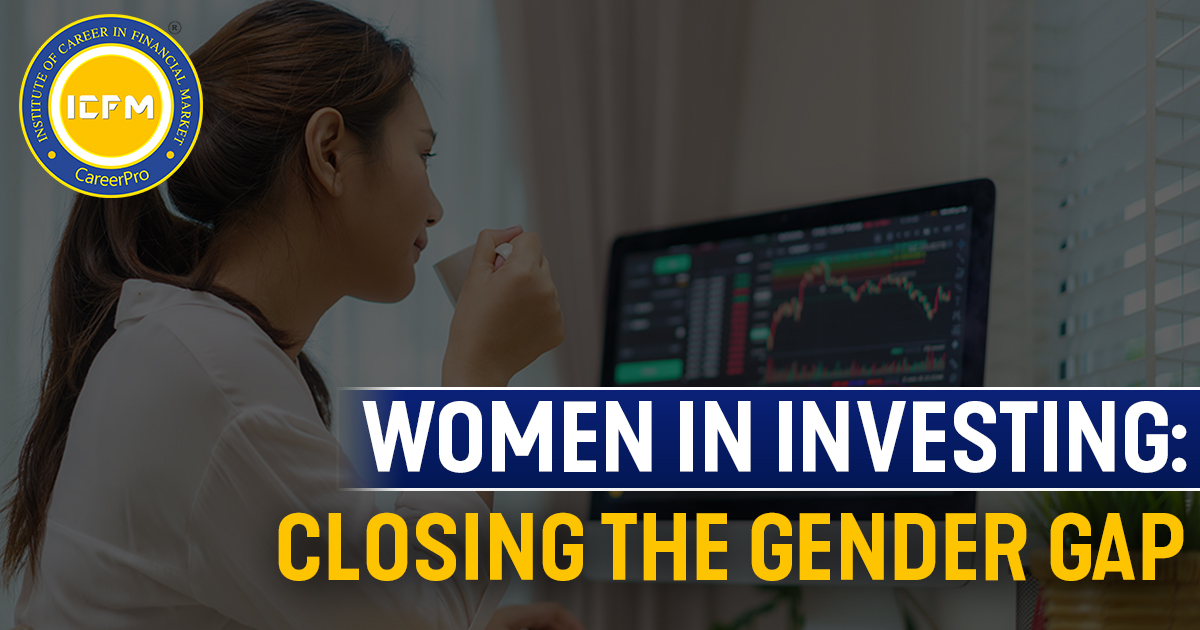The investing world is
male-dominated, although things have been really changing in the past few years
as more women elbow their way into the financial and investment arena. At that,
there exists a re-thinkable wide gender gap in participation, confidence, and
outcomes. This blog explores challenges females face in investing, benefits
accruable to closing the gap, and actionable steps toward getting more women to
be active investors.
The Status of Women in Investing Today
Historically, women have
always been less represented in the investment world. Some causes for this
problem can range from societal expectations to financial education and even
plain self-confidence. Studies point out that women are significantly less
likely than men to invest in stock. Most women rather save. This conservative
approach might be safe but is sure to offer lesser long-term growth in
finances.
One of the important reasons
is the confidence gap. Even when women are equally or more competent, they seem
to doubt their financial acumen as compared to men. This lack of confidence in
one's own judgment might deter women from taking investment decisions or even
approaching a financial advisor. The second major problem is that
traditionally, financial services have been a male preserve. This can make the
entire financial environment seem unwelcoming, or even intimidating, to
approach.
Benefits of closing the gender gap:
Bridging the gender
investment gap is not only a fairness issue; it holds concrete benefits for
women, their families, and the economy as a whole.
More
Financial Security: By investing, women are much better
positioned to create wealth than through saving alone. On average, investments
are more fruitful in the long run and therefore considerably improve the chances
of securing women's financial futures and achieving goals such as buying a
home, financing education, and retirement.
Economic
Growth: Higher women's participation in investing could fuel
economic growth. Usually, when women invest, they help in enhancing the flow of
capital required to sustain business development and innovation.
Diverse
Perspectives: Women bring very different perspectives
and strategies for assessing risk to investing. Studies tend to indicate that
women are much more conservative and diligent in their investment choices and
help give rise to much more stable and diversified portfolios.
Empowerment
and Equality: Facilitation of financial independence and
literacy is the pathway to the empowerment of women and, out of this, their equality.
If women have their financial futures under their management, then they find
autonomy and a sense of authority over many other life aspects.
Challenges Women Face When Investing
There is a need to
identify the challenges women face in the investment arena to bridge this gap.
There exists a confidence
gap since most women, as indicated above, do not believe in their capability to
make independent financial decisions. This gap shall hinder them from making
the right steps to invest or even consult experts.
Societal
Norms: Gender roles and cultural beliefs discourage most
women from being involved in financial issues. At an early age, girls are not
motivated to develop interests in finance as much as boys are.
Representation:
Women are grossly underrepresented in finance, a fact which can make it
difficult for interested parties to find role models. The idea is that women
would be more likely to invest if they had successful women investors to look
up to. Historically, these examples have been few and far between.
Education:
Many women express the feeling of claiming insufficient knowledge about
investment to make informed decisions. This educational gap may be perpetuated
not only by the formal system of education but also by cultural attitudes
regarding women vis a vis finance.
Access to the networks:
Networking is key when it comes to financial freedom. Generally, women have
fewer chances at exposure to financial networks and mentorship programs, and
this might serve to slow them down on their journey to investing.
How to Encourage More Women to Invest
These challenges require
aggressive and sustained efforts on the part of individuals, financial
institutions, and society as a whole. Here are some strategies to encourage
more women to invest:
Financial
Education Programs: More broad-based financial literacy
programs should target women, enabling them to build their confidence and
knowledge. These workshops, online courses, seminars, or any other
education-related activities will go on to offer hands-on tips and strategies
about investment.
Female
Role Models: Successful female investors and financial
advisers can become role models for the majority of women investors. The media
and, as a matter of fact, the industry itself take center stage in giving due recognition.
Building
a Supportive Community: Women-focused investment groups and
forums are areas within which sharing experiences, asking questions, and
learning from others can be done in a supportive environment. Such communities
can also offer encouragement and accountability.
Addressing
the Confidence Gap: It is important for financial advisors
and institutions to gain the trust of women investors. This can be achieved
through clear advice that is not peppered with financial jargon that encourages
women to ask questions.
Workplace
Initiatives: Employers can add to this by offering
financial wellness programs at work and further nudging women to get invested
in retirement plans and other available investment channels.
Government
and Policy Support: That the policymakers underscore such
initiatives that drive financial literacy, provide incentives for women to
invest, along with tax benefits, grants, and public awareness campaigns that
make investing easier.
Conclusion
It is a very complex
problem that needs bringing women to the table of investing with concerted
efforts at various levels. Having understood the unique set of barriers among
women, focusing strategies on getting them out, we can then build enablers for
a more inclusive and equitable landscape in investment. If more women can be
empowered to invest, then it will not only bring gains at individual lives but
also drive economic progress and gender equity. It means that with more women
gaining the knowledge and becoming confident in investing, they will create a
secure financial future and set a bright example for the next generation of
female investors.









